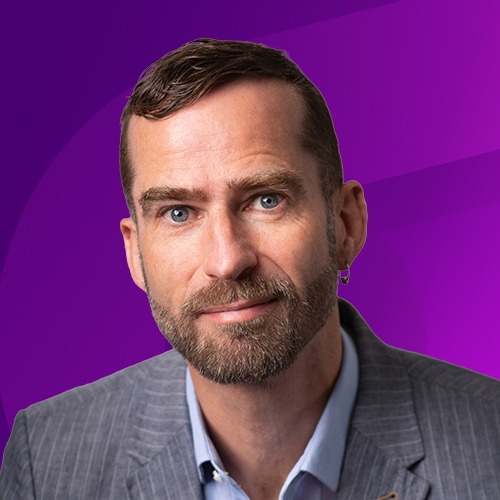In today’s dynamic business world, companies must prioritize adaptability. Recognizing this, iluminr has created the Gamechangers in Resilience interview series, honoring influential leaders who have successfully championed flexibility and resilience within their organizations, clients, and communities.
Showcasing voices from various corners of the globe, this series puts the spotlight on these exceptional individuals. They have not only empowered their teams, ecosystems, and communities to thrive in the face of adversity but also served as catalysts for growth and transformation. Through celebrating their accomplishments, iluminr honors these leaders’ remarkable impact and unwavering commitment to achieving success, even in challenging circumstances.
Margaret Millett, MSc Business Continuity, FBCI (Hon), MBCP has been actively involved in the business continuity field for many years and has worked for financial services companies in Boston and Dublin. She worked for eBay in California for 6 years prior to moving to North Carolina in 2014. She currently works for Uber Technologies, Inc. as the Head of Global Resilience. Margaret has held board levels positions with business continuity organizations, written publications and spoken at business continuity management conferences in North America, Europe, Asia and the Middle East.
Q: How did you get started in the field of Resilience?
Margaret: I entered the field of Resilience by accident. I was working for a mutual fund company in Boston, MA. We were moving two offices into a new office building. The project manager asked me to document a “Business Continuity Plan.” I had no idea what they were asking for, but I said yes. I enjoyed putting the plan together. During the move I was out of the country for a 10-day vacation over two weekends. This was before mobile phones and laptops were available. When I returned from my trip everyone told me my documentation was very comprehensive. Six months after the move a position was posted for Business Continuity Management at my company. The rest is history as I approach the start of my 30th year in the profession.
Q: What do you believe is the most important factor in building a strong and resilient corporate culture, and how do you help to instill that culture in the organizations you work with?
Margaret: Great culture should provide continuous alignment to the vision, purpose, and goals of the organization.
You have to get people excited, proud and appreciative of the culture. Enlist them, empower them and encourage them. When they “own” it, the culture will thrive. Cultures that thrive have leadership support, champions throughout the organization, and people who believe in what is trying to be accomplished.

Q: How do you balance the need for risk management with the desire for innovation and growth in an organization, and what strategies have you used to effectively manage those competing priorities?
Margaret: An organization’s appetite for risk will change over time as the organization’s strategies evolve. It is important to exercise the governance responsibilities and explore how the executive team is applying appetite to successfully create and protect the value of the organization.
This is becoming more difficult as business landscapes are changing, and they see further challenges ahead. There are more voices impacting organizations in new ways. Regulators are broadening their reach into data privacy and security, stakeholders are expecting organizations to share strong social purpose, and employees are shifting the way they work. The risks associated with the changing landscape differ based on strategic directions, and these messages must be understood.
Q: What do you think are some of the biggest challenges facing businesses today in terms of risk management, and how can organizations best prepare for those challenges?
Margaret: Risk management failures are often depicted as the result of unfortunate events, reckless behavior or bad judgment.
There are some common risk management pitfalls to avoid:
1) Poor governance
2) Supply chain oversight
3) Immature Enterprise Risk Management
4) Reckless risk taking
5) Toxic work environment.
I think explaining the importance of risk management to executives needs to be in the context of assuring the ability to meet and exceed company goals while minimizing the amount of volatility and variability.
It is also about transparency, making sure the decisions being made are in line with the goals of the executives – who are ultimately accountable for both short term and sustainable results.

Q: How have you leveraged technology and data analytics in your work with enterprise risk management and business continuity planning, and what benefits have you seen from those efforts?
Margaret: The effective use of data and technology to manage and report on enterprise risks and business continuity planning is a differentiation for teams reporting to leadership.
Take the time to drive awareness of the role that technology and data can play.
Allocate sufficient budget to invest in technology and develop or acquire a workforce with the skill sets required to manage it. Hold stakeholders accountable for their use of data and technology in risk-management activities. Work with management to ensure risk reporting is forward-looking and covers emerging risks.
Q: How have you collaborated with external stakeholders, such as government agencies or industry associations, to promote best practices in business resilience and continuity planning?
Margaret: Early in my career I wanted to make a difference within the profession. I was an elected member of the DRII Certification Commission when they only had the CBCP and MBCI certifications. When I was on the DRII Certification Commission we started to create the ABCP, Vendor and Internal Audit certification requirements.
I have been a BCI Good Practice Guide (GPG) Volunteer for the past four iterations. It has been remarkable to work with people from across the globe to hear their thoughts on the profession to incorporate global thought leadership into a single source document.
It is extremely important to contribute to best practices since the profession continues to evolve based on new rules & regulations, tools, world events and new members of the profession. It is rewarding to contribute back to the profession.

Q: How do you approach risk assessment and mitigation for third-party vendors and partners, and what strategies have you found to be most effective in managing those risks?
Margaret: Organizations need to understand the purpose of a “Risk, Policy and Compliance Third Party Vendor Risk Assessment” is the process of screening and evaluating third party suppliers as potential business partners. It aims to identify risks and hazards associated with the vendor’s processes and products and ensure that appropriate security controls are implemented to protect the confidentiality, integrity, and availability of data requirements set by the organization.
The process of The Third-Party Vendor Risk Assessment Process starts with a necessity of a business unit to acquire a product, software, or service offered by a third party that needs to use, process, transmit, store, or reproduce an organization’s data. An organization’s Procurement Services addresses this necessity by identifying different options and vendors in the market.
Q: What advice would you give to someone who is just starting their career in business continuity or enterprise risk management, and what qualities do you believe are essential for success in this field?
Margaret: Please come join the profession! There are fantastic people across the globe with fulfilling careers! In my opinion to be successful it helps to have a knowledge of project management, public speaking, budgets, and strategic thinking. Project management will assist you in understanding how long it truly takes to get work done.
In this profession there is a lot of presenting in person and via online platforms to stakeholders and leadership so feel comfortable talking to people. If you want a management position, you will be in charge of a budget so learn how to put a budget together and manage it.
Strategic thinking is essential to navigate building & maintaining a program as well as staying the course with new regulations.

Q: What is the leadership playbook you are writing for yourself in real-time?
Margaret: If you want to lead people, the first step is genuinely wanting to be a good leader. No two leaders are the same.
As a leader you have to model the way. You need to show people how to ‘walk the talk’. Leaders need to inspire a vision of learning.
Provide teams with the compass they need to get ahead in their careers. Challenge the process by supporting innovative ways for the people you manage to design a future, establishing a safe and trusting culture in which thoughtful risk-taking is the norm. Enable others to act so all team members’ views are sought and respected.
Q: How do you apply the lessons of Resilience in your own life?
Margaret: I was laughing when I read this question. My day job spills into my private life. I like to be prepared in home projects, trips, and be ready to leave my home in the event I am told by the local authorities to evacuate my home.
We live in a dynamic world, so we need to be prepared. It is not a matter of if but when.














